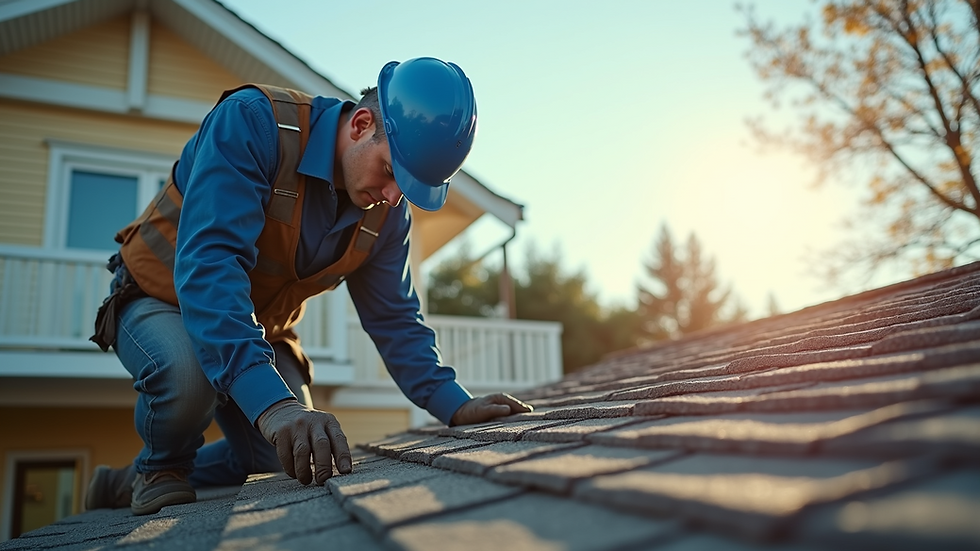Key Components of Buyer Home Inspections
- Mark Rogers
- Nov 1
- 3 min read
When purchasing a home, a thorough inspection is essential to ensure you are making a sound investment. A home inspection reveals the condition of the property and highlights any potential issues that could affect your decision. Understanding the key components of a buyer home inspection can help you navigate the process confidently and avoid costly surprises.
Buyer Home Inspections Guide: What to Expect
A buyer home inspection is a detailed examination of a property’s major systems and components. It typically covers the structure, roofing, plumbing, electrical systems, heating and cooling, and more. The goal is to identify any defects or safety concerns before finalising the purchase.
During the inspection, a qualified professional will assess:
Structural integrity: Checking for cracks, foundation issues, and signs of water damage.
Roof condition: Inspecting shingles, gutters, and drainage to ensure the roof is sound.
Plumbing system: Testing pipes, fixtures, and water pressure for leaks or corrosion.
Electrical system: Verifying wiring, outlets, and circuit breakers meet safety standards.
Heating and cooling: Evaluating the efficiency and condition of HVAC units.
Interior and exterior: Examining walls, windows, doors, and insulation for damage or wear.
The inspector will provide a detailed report with photos and recommendations. This report is invaluable for negotiating repairs or deciding whether to proceed with the purchase.

Understanding the Importance of Each Inspection Component
Each part of the home inspection plays a crucial role in assessing the overall health of the property. Here’s why these components matter:
Structural Integrity
The foundation and framing support the entire house. Cracks in walls or uneven floors can indicate serious problems. For example, a small crack might be cosmetic, but large or widening cracks could signal foundation movement. Early detection allows you to request repairs or reconsider the purchase.
Roofing
A damaged roof can lead to leaks, mould, and costly repairs. Inspectors look for missing shingles, sagging areas, and blocked gutters. Knowing the roof’s age and condition helps estimate when replacement might be needed.
Plumbing
Leaky pipes or outdated plumbing can cause water damage and increase utility bills. Inspectors check for corrosion, water pressure issues, and proper drainage. For instance, slow drains might indicate blockages or pipe damage.
Electrical Systems
Faulty wiring is a fire hazard. Inspectors ensure outlets are grounded, breakers function correctly, and wiring complies with regulations. Older homes may require upgrades to meet modern safety standards.
Heating and Cooling
HVAC systems are expensive to repair or replace. Inspectors assess their age, maintenance history, and efficiency. A well-maintained system can save money and improve comfort.
Interior and Exterior
Windows, doors, and insulation affect energy efficiency and security. Inspectors look for drafts, broken seals, and signs of pest damage. Proper insulation reduces heating and cooling costs.

What is the biggest red flag in a home inspection?
One of the most significant red flags during a home inspection is foundation problems. Issues such as large cracks, uneven floors, or doors and windows that don’t close properly often point to foundation movement or settling. These problems can be costly to repair and may affect the structural safety of the home.
Other major red flags include:
Roof leaks that have caused water damage.
Mould or mildew indicating moisture problems.
Outdated or faulty electrical wiring posing fire risks.
Severe plumbing leaks that could lead to flooding.
Pest infestations such as termites damaging wood structures.
If any of these issues are found, it’s important to get expert advice on repair costs and potential risks. Sometimes, these problems can be negotiated with the seller or may even be a reason to walk away from the deal.
How to Prepare for a Buyer Home Inspection
Preparation can make the inspection process smoother and more effective. Here are some practical tips:
Attend the inspection: Being present allows you to ask questions and see issues firsthand.
Review the report carefully: Understand the severity of each finding.
Request repairs or credits: Use the inspection report to negotiate with the seller.
Get specialist inspections if needed: For example, if mould or pests are suspected, hire experts.
Plan for future maintenance: Use the report to budget for upcoming repairs or upgrades.
By preparing well, you can make informed decisions and avoid unexpected expenses after moving in.
Final Thoughts on Buyer Home Inspections
A thorough buyer home inspection is a critical step in the home buying process. It provides peace of mind and protects your investment by uncovering hidden problems. Whether it’s the roof, foundation, or electrical system, understanding each component helps you evaluate the property’s true condition.
For those looking to ensure a comprehensive evaluation, consider scheduling a buyer home inspection with a trusted professional. This step can save you time, money, and stress in the long run.
Taking the time to understand the key components of a home inspection empowers you to make confident, informed decisions when purchasing your new home.








Comments